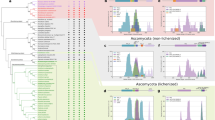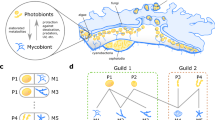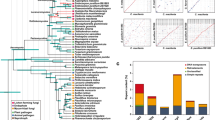Abstract
WALLROTH1 introduced the term ‘gonidia’ to describe the green cells found in lichens. They were considered to be ‘brood cells’ or organs of reproduction of the lichen-fungus. This interpretation of their function was accepted until the appearance of the classic work of Schwendener2. Although it was to be many years before the theory of the dual nature of lichens, proposed by Schwendener, was universally accepted, the gradual realization of the identity of the gonidia with free-living algae, brought about a complete change in meaning of this term. No longer could it retain its original application to cells which were thought to take part in the reproduction of the fungal component, but came to be accepted as a term applied to an organism, capable of independent existence, and in no way connected with reproduction of the lichen-fungus. Its continued use has been fostered by convenience at the expense of terminological exactitude.
This is a preview of subscription content, access via your institution
Access options
Subscribe to this journal
Receive 51 print issues and online access
$199.00 per year
only $3.90 per issue
Buy this article
- Purchase on Springer Link
- Instant access to full article PDF
Prices may be subject to local taxes which are calculated during checkout
Similar content being viewed by others
References
Wallroth, F. W., “Naturgeschichte der Flechten”, 1 and 2 (Frankfurtam-Main, 1825–27).
Schwendener, S., “Die Algentypen der Flechtengonidien”, (Basel, 1869).
Author information
Authors and Affiliations
Rights and permissions
About this article
Cite this article
SCOTT, G. Lichen Terminology. Nature 179, 486–487 (1957). https://doi.org/10.1038/179486b0
Issue Date:
DOI: https://doi.org/10.1038/179486b0
Comments
By submitting a comment you agree to abide by our Terms and Community Guidelines. If you find something abusive or that does not comply with our terms or guidelines please flag it as inappropriate.



